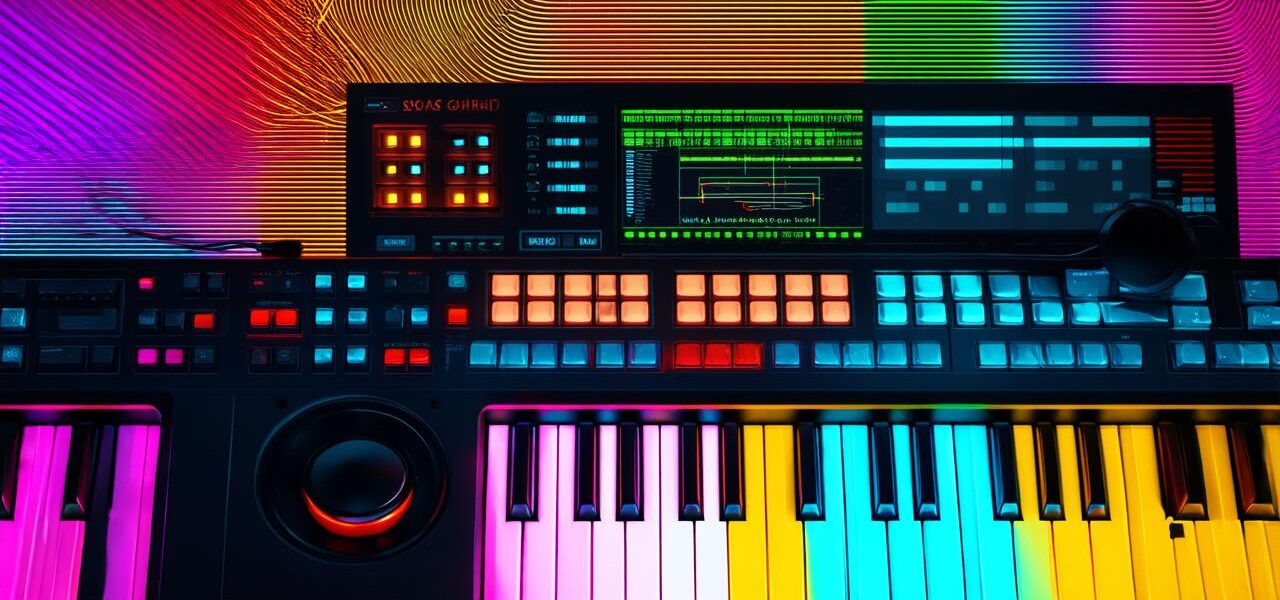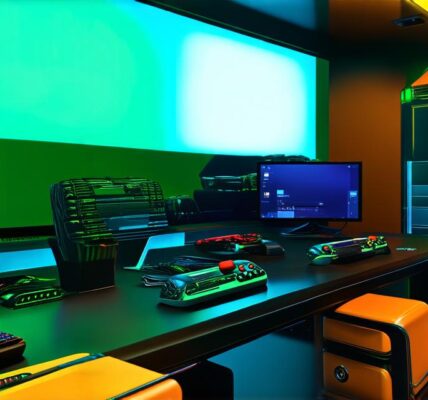Introduction:
Video game music plays an essential role in enhancing the overall gaming experience. It sets the tone of the game, creates an immersive environment, and helps players get emotionally invested in the storyline. Creating video game music can be a challenging task, but with the right approach and knowledge, it can be done effectively.
Step 1: Understanding the Basics of Music Theory
Before diving into the creation process, it’s essential to have a solid understanding of music theory. This includes concepts like melody, harmony, rhythm, and chord progressions. You should also be familiar with different musical genres and their characteristics. By mastering these fundamentals, you will have a better grasp of how to create music that fits the style and tone of your game.
Step 2: Determine the Mood and Tone of Your Game
The mood and tone of your game should be at the forefront of your mind when creating music. Are you trying to create an action-packed adventure or a peaceful, contemplative experience? Understanding the mood and tone will help guide your musical decisions and ensure that your music aligns with the overall narrative of your game.
Step 3: Choose Your Instruments Wisely
The choice of instruments is crucial when creating video game music. Some genres may require a mix of electronic and acoustic sounds, while others may rely more heavily on one type of instrument or another. It’s important to choose instruments that complement the mood and tone of your game and create a cohesive soundscape.
Step 4: Create a Melody That Captures Attention
The melody is the foundation of any piece of music, and it’s crucial in video game music to capture the player’s attention. Your melody should be catchy and memorable, and ideally, it should evoke an emotion that aligns with the mood of your game. It’s important to experiment with different melodies until you find one that feels right for your game.
Step 5: Add Harmony and Rhythm to Create Depth

Harmony and rhythm are essential components of any piece of music, and they add depth and complexity to your work. When creating video game music, it’s important to use harmony that complements the melody and enhances the overall mood of the game. Additionally, incorporating a strong sense of rhythm can create a sense of urgency or excitement, depending on the genre and style of your game.
Step 6: Incorporate Sound Effects for Added Impact
Sound effects are an essential element of video game music, as they help to create a more immersive experience for players. Whether it’s the sound of footsteps or the roar of a dragon, incorporating sound effects can add depth and excitement to your music. However, it’s important to use sound effects sparingly and ensure that they enhance the overall mood and tone of the game.
Step 7: Experiment with Different Styles and Genres
Experimenting with different styles and genres can help you create unique and memorable music for your game. Whether you’re using orchestral sounds, electronic beats, or a mix of both, there are countless possibilities when it comes to creating video game music. By experimenting with different styles and genres, you can create music that stands out from the crowd and adds a fresh perspective to your game.
Step 8: Optimize Your Music for Sound Engine
The sound engine is an essential component of any game, and it’s crucial to optimize your music to ensure it sounds great on different devices and platforms. This includes using appropriate bitrates, compression techniques, and ensuring that your music is in the correct format for your target platform. By optimizing your music for the sound engine, you can create a seamless audio experience for players across all platforms.
Conclusion:
Creating video game music requires a deep understanding of music theory, an ability to connect with the mood and tone of the game, and a willingness to experiment with different styles and genres. By following these steps and optimizing your work for maximum impact, you can create music that enhances the overall gaming experience and creates a lasting impression on players. Whether you’re just starting out or an experienced musician, this guide will provide valuable insights and tips to help you create video game music that stands out from the crowd.
FAQs:
1. What software is best for creating video game music?
There are many different software programs available for creating video game music, including Ableton Live, Logic Pro X, and FL Studio. The choice of software will depend on your budget, experience level, and the specific requirements of your project.
2. How do I ensure that my music is optimized for different platforms?
To optimize your music for different platforms, it’s important to use appropriate bitrates, compression techniques, and ensure that your music is in the correct format for your target platform. Additionally, you should test your music on multiple devices and platforms to ensure that it sounds great across all of them.
3. How do I incorporate sound effects into my music?
Incorporating sound effects can add depth and excitement to your music. To do this, you’ll need to carefully choose the right sounds and use them sparingly to ensure they enhance the overall mood and tone of the game. Additionally, you may need to adjust the volume levels and timing of your sound effects to create a cohesive audio experience.
4. How do I ensure that my music is memorable and catchy?
To create music that’s memorable and catchy, it’s important to focus on creating a strong melody that captures the player’s attention. Additionally, you may want to use repetition and variation to keep the music fresh and interesting, while still maintaining a consistent soundscape. Finally, experimenting with different styles and genres can help you create music that stands out from the crowd.




